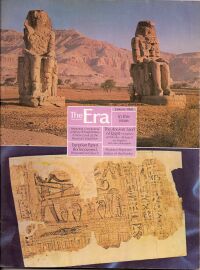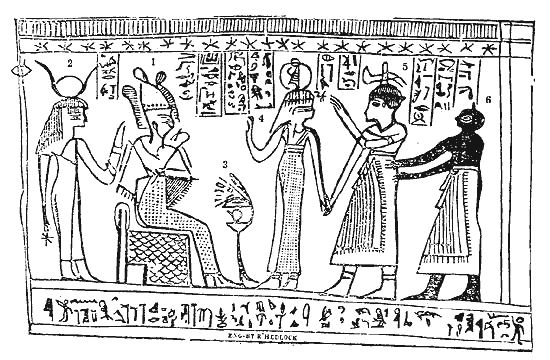
FAIR is a non-profit organization dedicated to providing well-documented answers to criticisms of the doctrine, practice, and history of The Church of Jesus Christ of Latter-day Saints.
(→{{Endnotes label}}: note) |
|||
| Line 107: | Line 107: | ||
#{{note|clark.eom1}}E. Douglas Clark, "Abraham," ''Encyclopedia of Mormonism'' {{link|url=http://eom.byu.edu/index.php/Abraham}} | #{{note|clark.eom1}}E. Douglas Clark, "Abraham," ''Encyclopedia of Mormonism'' {{link|url=http://eom.byu.edu/index.php/Abraham}} | ||
#{{note|gee.female.figures1}}John Gee, [http://maxwellinstitute.byu.edu/publications/books/?bookid=105&chapid=1176 "The Facsimiles of the Book of Abraham,"] Neal A. Maxwell Institute. Footnote 17 states: 17. "More information on this will be forthcoming, but one readily available instance is recorded in Apuleius, Metamorphoses 11.8." | #{{note|gee.female.figures1}}John Gee, [http://maxwellinstitute.byu.edu/publications/books/?bookid=105&chapid=1176 "The Facsimiles of the Book of Abraham,"] Neal A. Maxwell Institute. Footnote 17 states: 17. "More information on this will be forthcoming, but one readily available instance is recorded in Apuleius, Metamorphoses 11.8." | ||
#{{note|metamorphoses.109}}Carl C. Schlam, ''The Metamorphoses of Apuleius: On Making An Ass of Oneself'', 1992. | |||
{{FurtherReading}} | {{FurtherReading}} | ||
This article is a draft. FairMormon editors are currently editing it. We welcome your suggestions on improving the content.
| Answers portal |
| The Book of Abraham |
 |
|
FAQ:
Book of Abraham content: Production: |
|
== The following are common criticisms associated with Facsimile 3:
Critics consider these items conclusive evidence that Joseph Smith was not a prophet.
To see citations to the critical sources for these claims, click here
====
The matter is not as simple as critics would like to have us believe. Like almost all of us, the majority of critics are not experts on Egyptian writing or art.
So, this presents an interesting problem--if we are going to take an "academic" or "intellectual" approach to the problem, both believers and critics must all decide to trust an expert. The problem that we immediately encounter is that there are multiple "experts," and these experts do not all agree. Therefore, we are left to decide which "expert" we will trust. There are LDS experts who believe the Book of Abraham is a genuine artifact, and that it testifies to Joseph Smith' status as a prophet. Non-LDS experts obviously do not agree with that.
Latter-day Saints, as believers unequipped to deal with Egyptology, are not able to really assess that information for ourselves. We would need 15-20 years of schooling to do it. So, we can either trust our spiritual future to the experts of our choice, or we can rely ultimately upon revelation.
Critics' claim that Facsimile #3 alone is enough to settle the question of whether or not Joseph Smith was a prophet. This is very convenient for them, because it allows one to focus only on one (very complex) issue that only a few people have the tools to understand. It is, in a sense, to put the critic in an "unassailable position." The critics has made his or her choice, and does not want to debate it or be told he or she is wrong, or return to the question.
And, what the critic might consider a "slam dunk" or "vital point," might (from a believer's or some Egyptologist's point of view) really not be so conclusive OR so vital.
According to Michael D. Rhodes in the Encyclopedia of Mormonism,
Facsimile 3 presents a constantly recurring scene in Egyptian literature, best known from the 125th chapter of the Book of the Dead. It represents the judgment of the dead before the throne of Osiris. It is likely that it came at the end of the Book of Breathings text, of which Facsimile 1 formed the beginning, since other examples contain vignettes similar to this. Moreover, the name of Hor, owner of the papyrus, appears in the hieroglyphs at the bottom of this facsimile.
Joseph Smith explained that Facsimile 3 represents Abraham sitting on the pharaoh's throne teaching principles of astronomy to the Egyptian court. Critics have pointed out that the second figure, which Joseph Smith says is the king, is the goddess Hathor (or Isis). There are, however, examples in other papyri, not in the possession of Joseph Smith, in which the pharaoh is portrayed as Hathor. In fact, the whole scene is typical of Egyptian ritual drama in which costumed actors played the parts of various gods and goddesses.
In summary, Facsimile 1 formed the beginning, and Facsimile 3 the end of a document known as the Book of Breathings, an Egyptian religious text dated paleographically to the time of Jesus. Facsimile 2, the hypocephalus, is also a late Egyptian religious text. The association of these facsimiles with the book of Abraham might be explained as Joseph Smith's attempt to find illustrations from the papyri he owned that most closely matched what he had received in revelation when translating the Book of Abraham. Moreover, the Prophet's explanations of each of the facsimiles accord with present understanding of Egyptian religious practices. [1]
However, BYU Egyptologist John Gee challenges the notion that Facsimile 3 is associated with Book of the Dead 125,
[B]oth Facsimile 1 and Facsimile 3 are assumed to belong to the Book of Breathings Made by Isis because they accompanied the text in the Joseph Smith Papyri. Yet the contemporary parallel texts of the Book of Breathings Made by Isis belonging to members of the same family have different vignettes associated with them. Instead of a scene like Facsimile 3, most Books of Breathings Made by Isis show a man with his hands raised in adoration to a cow. This indicates that the facsimiles of the Book of Abraham do not belong to the Book of Breathings. [2]
Robert K. Ritner, Professor of Egyptology at the University of Chicago, states that "Smith’s hopeless translation also turns the goddess Maat into a male prince, the papyrus owner into a waiter, and the black jackal Anubis into a Negro slave."[3]
Larry E. Morris notes the following in response to criticism leveled by Professor Ritner at the Book of Abraham,
Furthermore, Ritner does not inform his readers that certain elements of the Book of Abraham also appear in ancient or medieval texts. Take, for example, Facsimile 3, which depicts, as Ritner puts it, "enthroned Abraham lecturing the male Pharaoh (actually enthroned Osiris with the female Isis)" (JNES, p. 162). In what Ritner describes as nonsense, Joseph Smith claimed that Abraham is "sitting upon Pharoah's throne . . . reasoning upon the principles of Astronomy" (Facsimile 3, explanation).
Clearly, Joseph Smith's interpretation did not come from Genesis (where there is no discussion of Abraham doing such a thing). From Ritner's point of view, therefore, this must qualify as one of Joseph's "uninspired fantasies." But going a layer deeper reveals interesting complexities. A number of ancient texts, for example, state that Abraham taught astronomy to the Egyptians. Citing the Jewish writer Artapanus (who lived prior to the first century BC), a fourth-century bishop of Caesarea, Eusebius, states: "They were called Hebrews after Abraham. [Artapanus] says that the latter came to Egypt with all his household to the Egyptian king Pharethothes, and taught him astrology, that he remained there twenty years and then departed again for the regions of Syria."22
As for Abraham sitting on a king's throne—another detail not mentioned in Genesis—note this example from Qisas al-Anbiya' (Stories of the Prophets), an Islamic text compiled in AD 1310: "The chamberlain brought Abraham to the king. The king looked at Abraham; he was good looking and handsome. The king honoured Abraham and seated him at his side."23 [4]
Morris concludes,
Ritner may counter that such parallels do not establish the authenticity of the Book of Abraham. That is true, but certainly they deserve some mention. At the very least, these parallels show that "all of this nonsense" is not really an appropriate description of Joseph Smith's interpretation. Fairness demands that Ritner, in his dismissal of the content of the Book of Abraham, at least mention similarities between it and other texts about Abraham and point readers to other sources of information. [5]

Critics focus on three specific interpretations which reference an interpretation of characters in the facsimile. Joseph Smith provides the following identifications for three of the figures in the facsimile:
What is notable in these particular identifications is that Joseph isn't simply assigning an identify to each figure, but is indicating that characters located near each figure confirm the assignments. Egyptologists note that the characters have an entirely different meaning.
| This section of the article is still under construction. We welcome your suggestions for improving the content of this FairMormon Answers article. |
Figure 2, identified by Joseph as "King Pharaoh" and figure 4, identified by Joseph as "Prince of Pharaoh" are obviously drawn as female figures. The fact that they are drawn as females is so obvious, in fact, that critics take this as evidence of Joseph's lack of ability to interpret the facsimiles in any fashion whatsoever. Since the figures would obviously have appeared as females even to Joseph's eye, why then are they interpreted as two of the primary male figures?
Regarding the identification of these figures, John Gee notes,
Facsimile 3 has received the least attention. The principal complaint raised by the critics has been regarding the female attire worn by figures 2 and 4, who are identified as male royalty. It has been documented, however, that on certain occasions, for certain ritual purposes, some Egyptian men dressed up as women. [8]
The Festival of Isis is led off by anteludia, a comic masquerade in which both men and animals are disguised in various roles (11.8). There are men dressed up as a soldier, a hunter, a woman, a gladiator, a magistrate, a philosopher, a fowler, and a fisherman. [9]
==
Notes==
- [note] Michael Rhodes, in Daniel H. Ludlow, ed., "Book of Abraham," Encyclopedia of Mormonism off-site
- [note] John Gee and Brian M. Hauglid, "Facsimile 3 and Book of the Dead 125," Astronomy, Papyrus and Covenant, Neal A. Maxwell Institute.
- [note] Robert K. Ritner, “The Breathing Permit of Hor Among the Joseph Smith Papyri," Journal of Near Eastern Studies, (University of Chicago, 2003), p. 162, note 4. Dr. Ritner is one of Dr. John Gee's former professors at Yale. Ritner's article in the Journal of Near eastern Studies is highly critical of his former student's involvement with any LDS apologetic effort on the part of the Book of Abraham, specifically because he was not included in a peer review.
- [note] Larry E. Morris, "The Book of Abraham: Ask the Right Questions and Keep On Looking (Review of: “The ‘Breathing Permit of Hor’ Thirty-four Years Later.” Dialogue 33/4 (2000): 97–119)," FARMS Review 16/2 (2004): 355–380. off-site
- [note] Larry E. Morris, "The Book of Abraham: Ask the Right Questions and Keep On Looking (Review of: “The ‘Breathing Permit of Hor’ Thirty-four Years Later.” Dialogue 33/4 (2000): 97–119)," FARMS Review 16/2 (2004): 355–380. off-site
- [note] 25.Bradley J. Cook, "The Book of Abraham and the Islamic Qisas al-Anbiya< (Tales of the Prophets) Extant Literature," Dialogue 33/4 (2000): 127—46.
- [note] E. Douglas Clark, "Abraham," Encyclopedia of Mormonism off-site
- [note] John Gee, "The Facsimiles of the Book of Abraham," Neal A. Maxwell Institute. Footnote 17 states: 17. "More information on this will be forthcoming, but one readily available instance is recorded in Apuleius, Metamorphoses 11.8."
- [note] Carl C. Schlam, The Metamorphoses of Apuleius: On Making An Ass of Oneself, 1992.
Further reading and additional sources responding to these claims

FAIR is a non-profit organization dedicated to providing well-documented answers to criticisms of the doctrine, practice, and history of The Church of Jesus Christ of Latter-day Saints.
We are a volunteer organization. We invite you to give back.
Donate Now